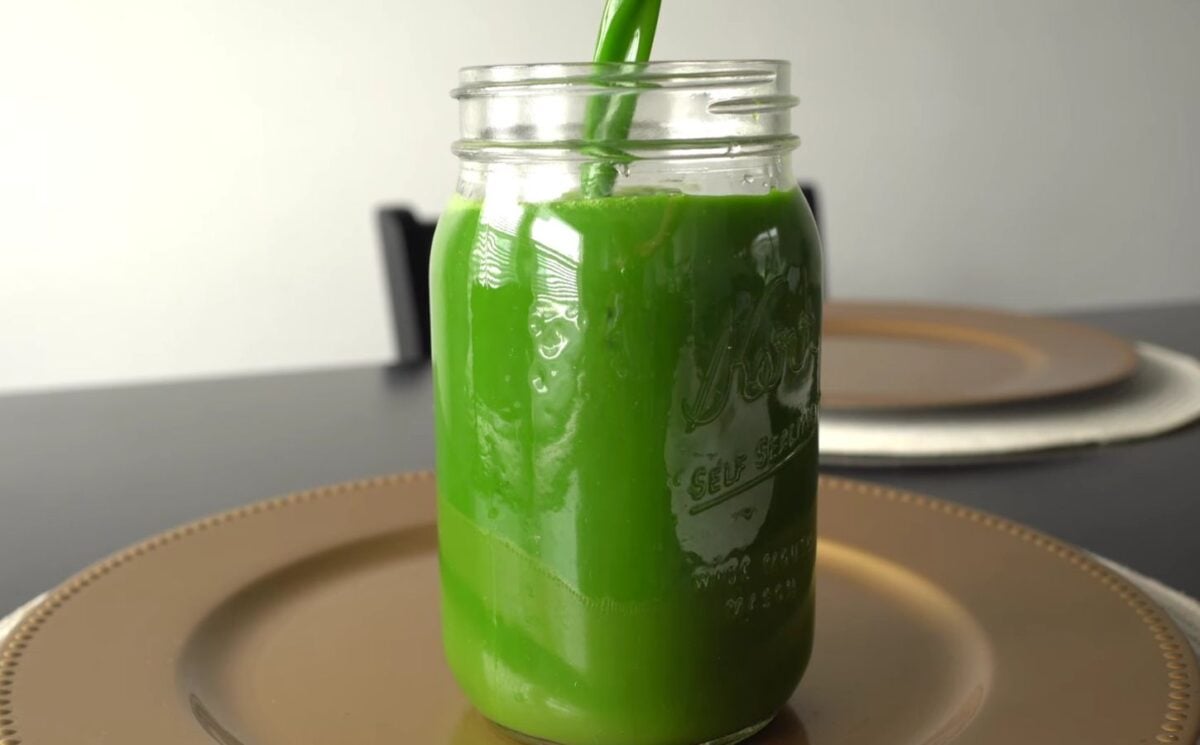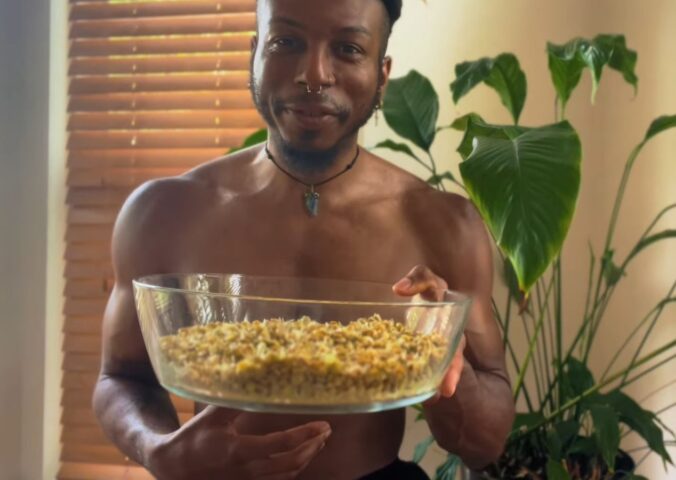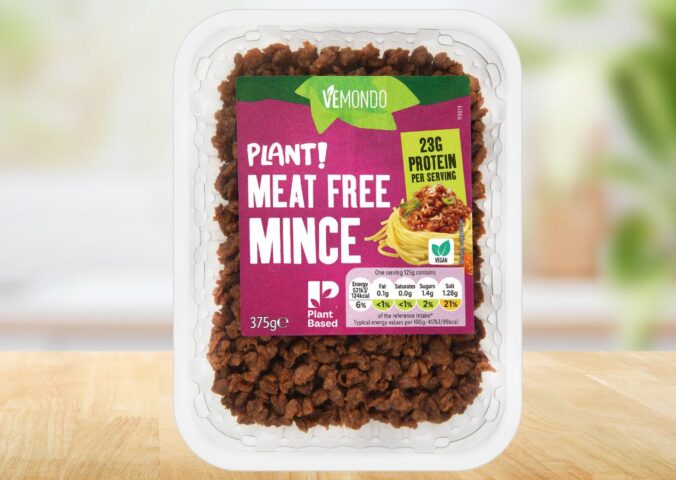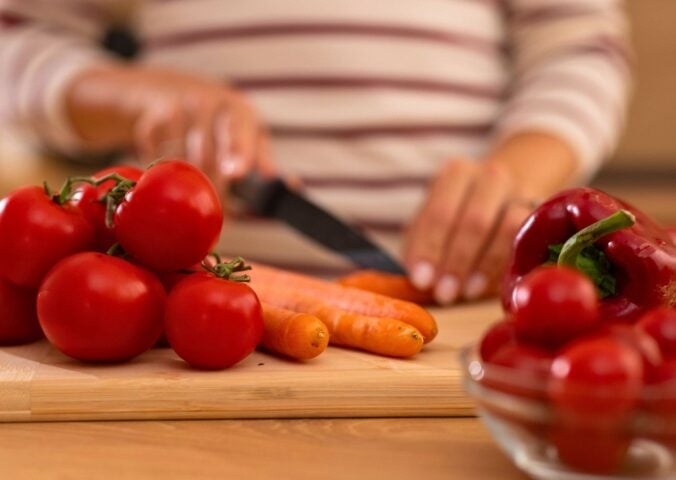Green juice has a reputation for being either a miracle cure-all or a bitter health drink you force yourself to swallow. But for Eunice Reyes, it can be both nourishing and enjoyable.
In a recent YouTube video, Reyes invites viewers into her kitchen to make what she calls her favorite iron-rich green juice. It encapsulates everything her platform stands for: flavor with purpose, nourishment with wanderlust.
Read more: Strawberry Juice Retains Vitamins After Pasteurization, New Study Finds
Reyes, better known to her followers as Rated V for Vegan, blends her passions for plant‑based cuisine and global exploration into every video. Drawing from experiences in 27 vegan‑friendly cities, from Hanoi and Istanbul to Madrid and Seattle, she envisioned a vegan food travel show when she realized she loved watching culinary travel programs, even though she could no longer eat most of the food featured. Rated V became her creative answer, a way to explore the world and enjoy her life to the max as a vegan.
“Today we’re going to be making my favorite iron-rich green leafy juice. And I’m going to tell you a bit of the benefits of why we should do this,” she says at the start of the video.
Why each ingredient matters
Reyes begins by washing her produce and explaining why each ingredient matters. Kale and parsley bring a powerful dose of iron. Celery contributes not only iron but also vitamin C, which helps the body absorb it more effectively. Lemon and apple (or pineapple, if you prefer) also boost vitamin C levels while adding brightness and sweetness.
“Ginger is really good for gut health, and it’s anti-inflammatory, and it also provides a little kick,” Reyes says. “If you know me, I like the little kick. So, I love ginger.” She adds cucumber for hydration, pointing out its benefits for skin: “As women, we want that nice glowy, dewy skin. So, the more hydrated the better.”
Registered dietitian Amy Chow, founder of BC Dietitians in Canada, agrees that these ingredients deliver a wide range of nutritional benefits. She explains that the juice “provides Vitamin K (from the green leafy veggies), Vitamin C (from lemon, fruits), potassium, and antioxidants. It’s refreshing, hydrating, and supports immune health, bone health, and blood pressure regulation.”
Chow also highlights the role of ginger, noting that it “can be soothing to the stomach so it can help with nausea and IBS symptoms,” while cucumbers, being 95% water, “can support skin health by promoting hydration, and provide a source of vitamin K, vitamin C, and antioxidants.”
Together, the ingredients create a juice that covers multiple bases: iron, vitamins, hydration, and gut-friendly compounds.
Juicing made real
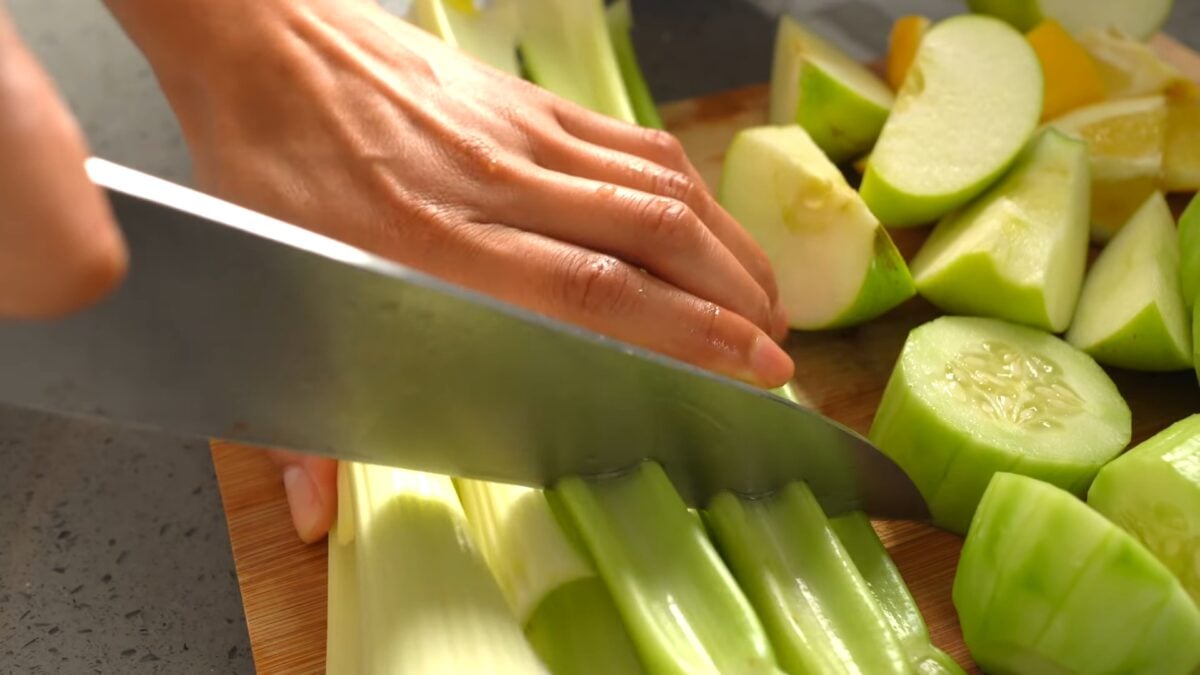
Preparing your ingredients before adding them to your juicer makes a difference. Reyes chops the lemon into quarters to fit into the chute, peels the ginger to remove its waxy coating, and slices celery stalks into manageable pieces. Her approach is straightforward and unfussy, just enough prep to make sure the juicer runs smoothly.
As the machine hums, she drops in the fruits and vegetables, watching as the vibrant green liquid pours out. “Look how beautiful,” Reyes says, admiring the finished juice.
The recipe yields enough for at least two days, making it practical for busy schedules. Reyes prefers the flavor profile to be refreshing rather than overly sweet. “I personally don’t like my green juices really sweet because I’m trying to get more of the leafy greens and the water and the vitamin C, not so much sugar, right? And green apple adds just enough sweetness that to me, it’s perfect.”
Juice vs whole fruits and vegetables
Chow notes that while juices can deliver vitamins and minerals, they’re not a perfect substitute for whole fruits and vegetables. “Juicing gets rid of most of the fiber, protein, and fats from fruits and vegetables as these are present in the pulp that gets left behind,” she says.
She also points out that juice “can be higher in sugar, depending on the ingredients, as you would require a lot more fruit to make a cup of juice than if you were eating it.” On the flip side, she points out that juicing does make the nutrients easy to digest and provides a concentrated source of vitamins and antioxidants.
Expert commentary provided by Amy Chow, registered dietitian and founder of BC Dietitians.
For more vegan recipes, travel, and lifestyle content, check out the Rated V for Vegan YouTube channel.
Read more: What Is Batch Juicing? How The Nama Juicer Takes The Hassle Out Of Healthy Living
